Two moles of a triatomic linear gas (neglect vibration degree of freedom) are taken through a reversible process ideal starting from A as shown in figure.
The volume ratio . If the temperature at A is , then :
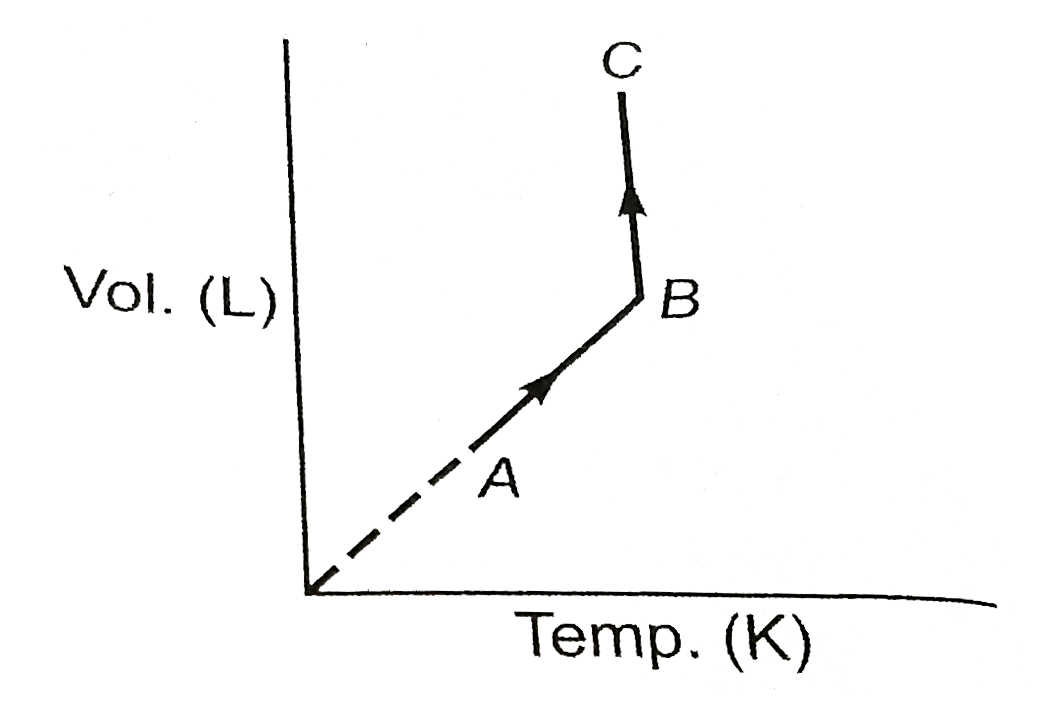
(ii) Total enthalpy change in both steps is : Solution in Telugu
3000 R
4200 R
2100 R
0
The correct Answer is:B, C
(i) (c)
(ii) (b)
= 4200 R
Topper's Solved these Questions
- BOOK - NARENDRA AWASTHICHAPTER - THERMODYNAMICSEXERCISE - Level 3 - One Or More Answers Are Correct1videos
THERMODYNAMICS
- BOOK - NARENDRA AWASTHICHAPTER - THERMODYNAMICSEXERCISE - Level 3 - Match The Column2videos
THERMODYNAMICS
- BOOK - NARENDRA AWASTHICHAPTER - THERMODYNAMICSEXERCISE - Level 1 (Q.121 To Q.150)1videos
THERMODYNAMICS
- BOOK - NARENDRA AWASTHICHAPTER - STOICHIOMETRYEXERCISE - Level 3 - Subjective Problems20videos
STOICHIOMETRY
Similar Questions
Assume ideal gas behaviour for all the gases considered and neglect vibrational degrees of freedom. Separate equimolar sample. Separate equimolar samples of Ne, O2 , CO2 and SO2 were subjected to a two process as mentioned. Initially all are at same state of temperature and pressue.
Step I → All undergo reversible adiabatic expansion to attain same final volume, which is double the original volume thereby causing the decreases in their temperature.
Step → After step I all are given appropriate amount of heat isochorically to restore the original temperature.
Mark the correct option(s) :06:45View SolutionMatch the following columns
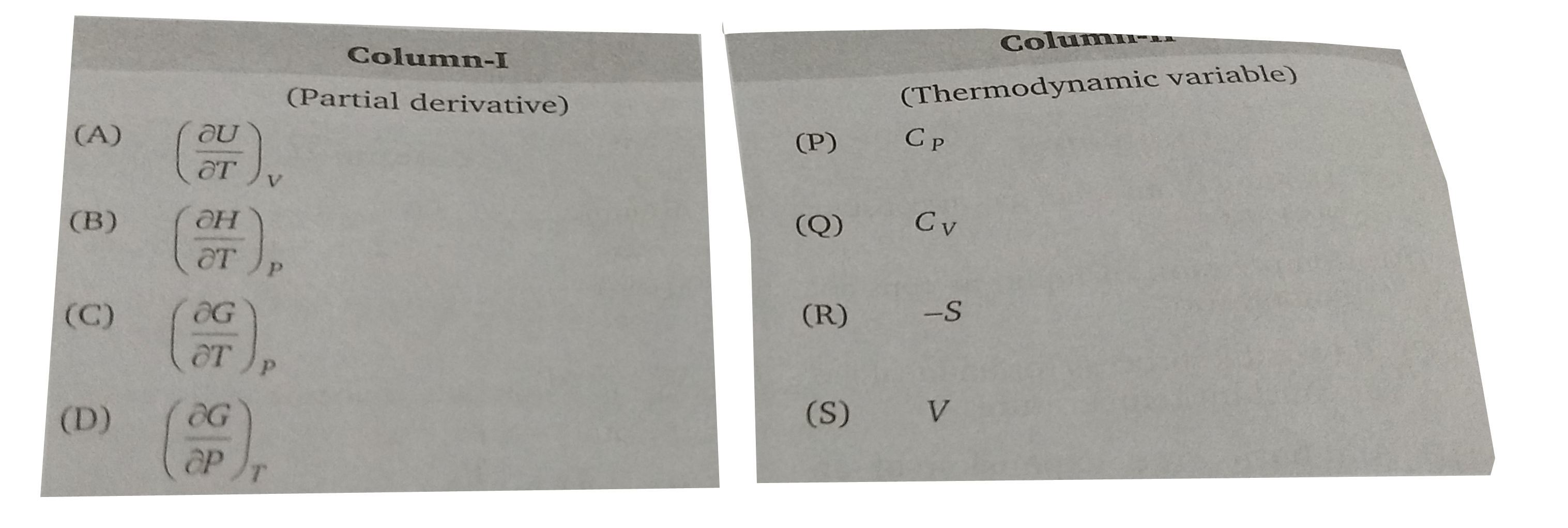 06:45View Solution
06:45View SolutionGasoline has an enthalpy of combustion 24000 kJ/mol gallon. When gasoline burns in an automobile engine, approximately 30% of the energy released is used to produce mechanical work. The remainder is lost as heat transfer to the engine's cooling system. As a start on estimating how much heat transfer is required, calculate what mass of water could be heated from 25∘C to 75∘C by the combustion of 1.0 gallon of gasoline in an automobile? (Given : C(H2O)=4.18J/g∘C)
06:45View SolutionWhat volume of a liquid (in L) will contain 10 mole ? If molar mass of liquid is 280 and its density is 1.4 g/mL.
06:45View SolutionA monatomic idea gas of 2mol is taken through a cyclic process starting from A as shown in figure. The volume ratio are VB/VA=2 and VD/VA=4. If the temperature TA at A is 27∘C, and gas constant is R. Calculate.
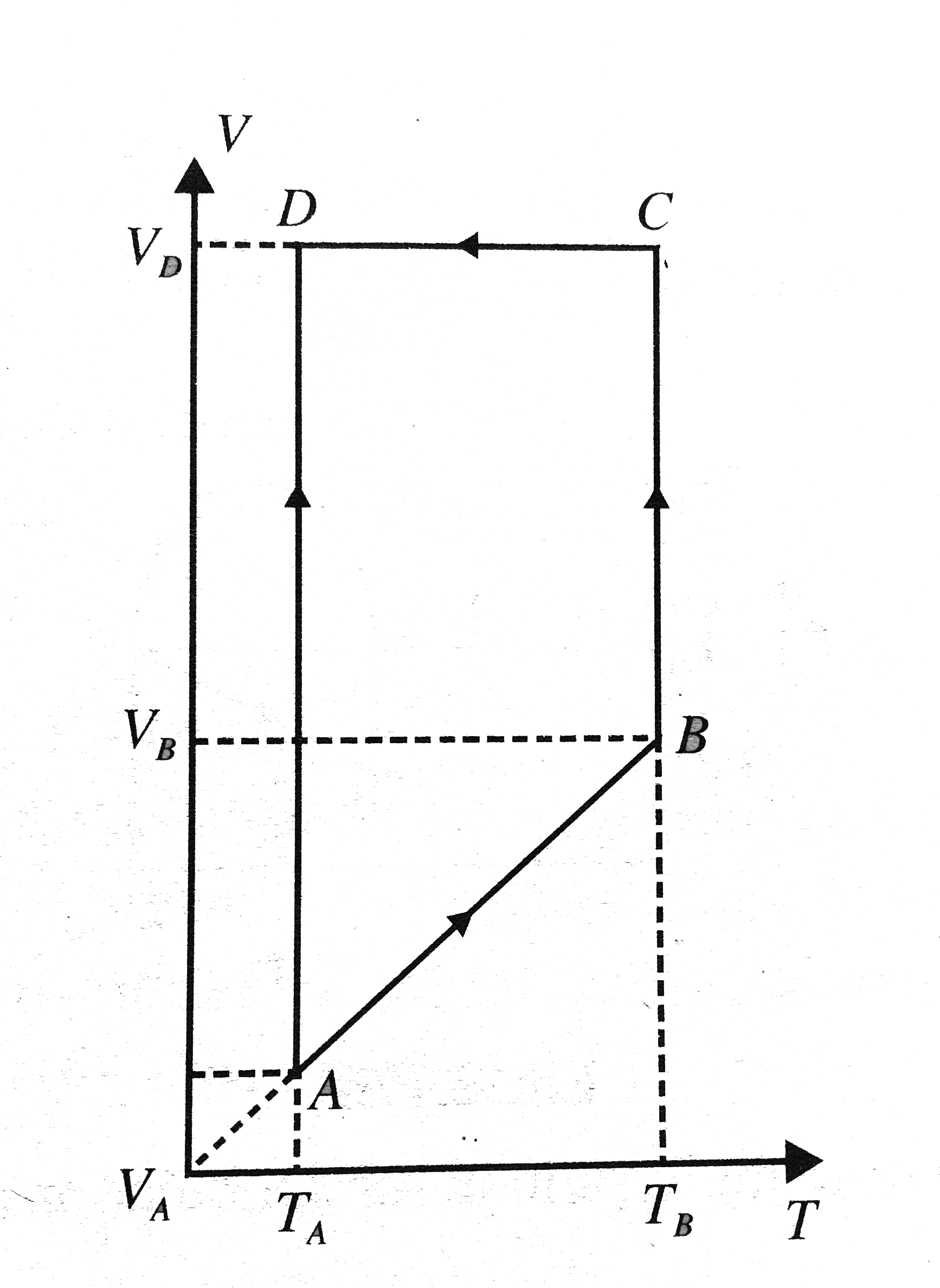
The temperature of the gas at point B06:45View SolutionA monatomic idea gas of 2 mol is taken through a cyclic process starting from A as shown in figure. The volume ratio are V_(B)//V_(A)=2 and V_(D)//V_(A)=4 . If the temperature T_(A) at A is 27^(@)C , and gas constant is R . Calculate. Heat absorbed or released by the gas in process A rarr B
18:30View SolutionA monatomic idea gas of 2mol is taken through a cyclic process starting from A as shown in figure. The volume ratio are VB/VA=2 and VD/VA=4. If the temperature TA at A is 27∘C, and gas constant is R. Calculate.
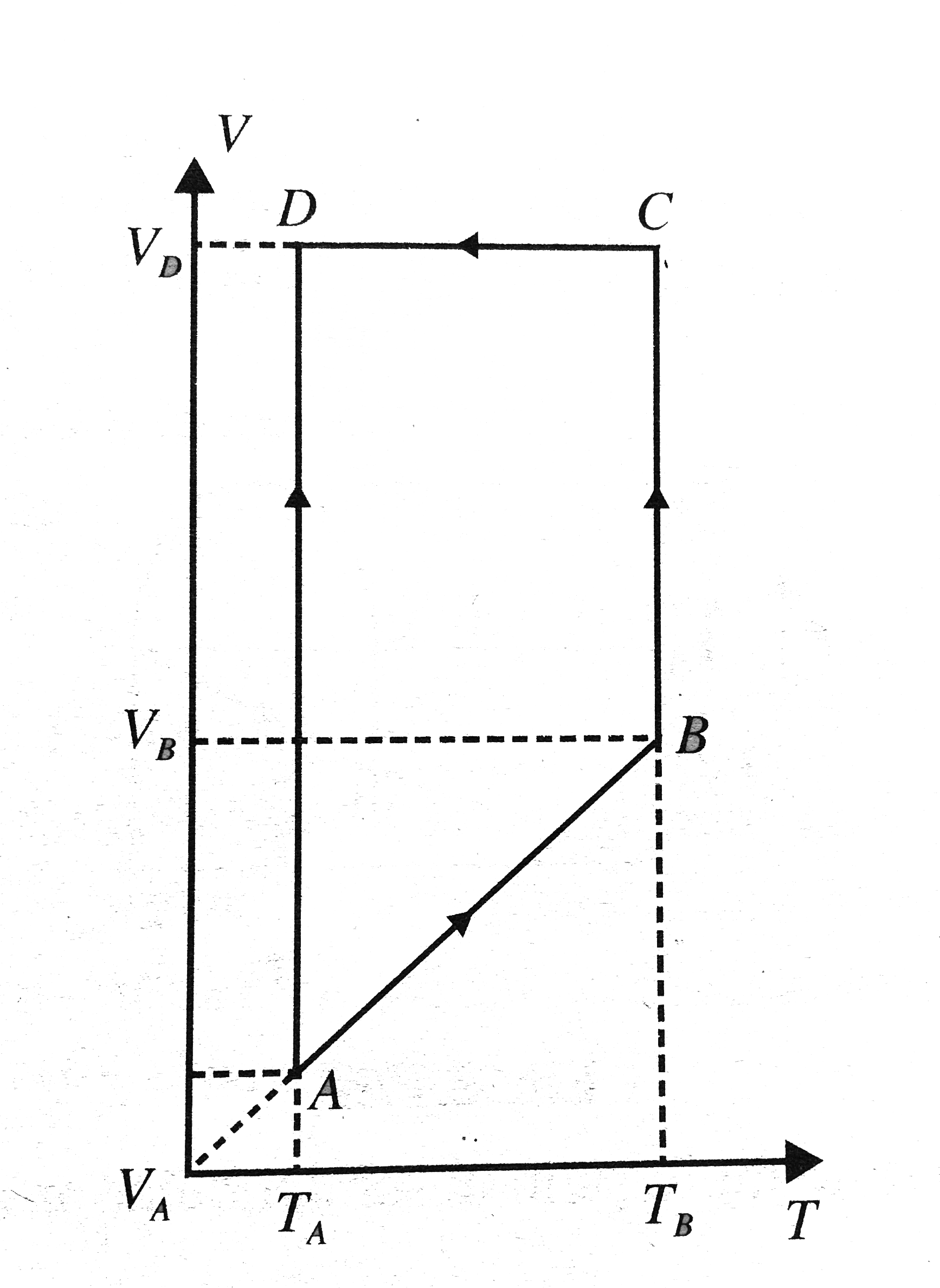 Heat absorbed or released by the gas in process B→C02:50View Solution
Heat absorbed or released by the gas in process B→C02:50View SolutionA monatomic idea gas of 2 mol is taken through a cyclic process starting from A as shown in figure. The volume ratio are V_(B)//V_(A)=2 and V_(D)//V_(A)=4 . If the temperature T_(A) at A is 27^(@)C , and gas constant is R . Calculate. Heat absorbed or released by the gas in process C rarr D .
06:51View SolutionA monatomic idea gas of 2 mol is taken through a cyclic process starting from A as shown in figure. The volume ratio are V_(B)//V_(A)=2 and V_(D)//V_(A)=4 . If the temperature T_(A) at A is 27^(@)C , and gas constant is R . Calculate. The total work done by the gas during the complete cycle.
View SolutionA monoatomic ideal gas of two moles is taken through a cyclic process starting from A as shown in figure. The volume ratios are (V_(B))/(V_(A))=2 and (V_(D))/(V_(A))=4 . If the temperature T_(A) at A is 27^(@)C , calculate: (a) The temperature of the gas at point B . (b) Heat absorbed or released by the gas in each process. (c) The total work done by the gas during complete cycle.
View SolutionTwo moles of triatomic linear gas are taken through a reversible process staring from A as shown in figure. The volume ratio (V_(B))/(V_(A)) = 4 . If the temperature at 'A' is -73^(@)C then determine total enthalpy change in both steps.
02:52View Solution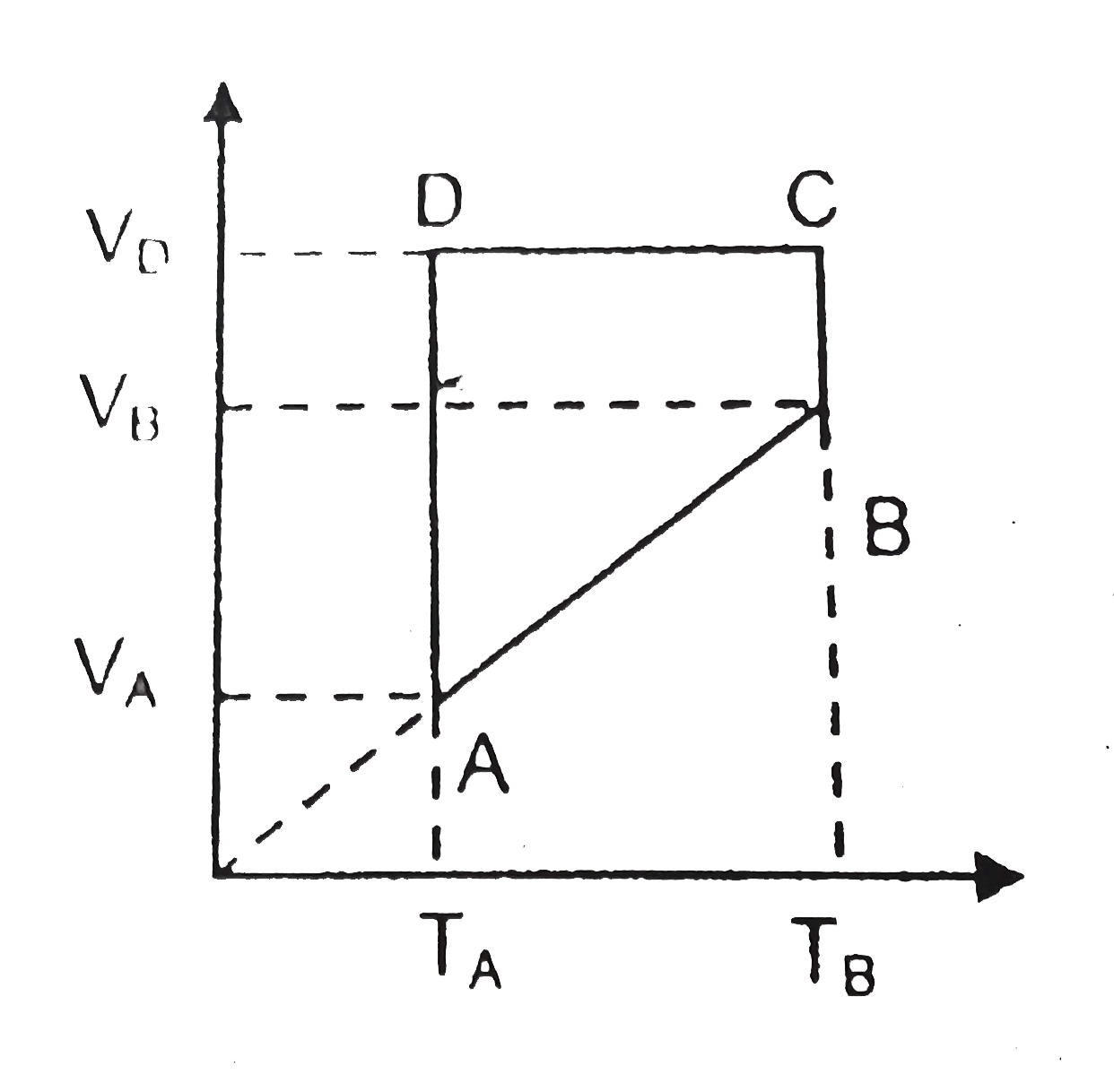
A monoatomic ideal gas of two moles is taken through a cyclic process starting from A as shown
VBVA=2 and VDVA=4
Temperature TA at A is 27∘C.
Q. Temperature at C is02:21View SolutionA monoatomic ideal gas of two moles is taken through a cyclic process starting from A as shown figure. The volume rations are (V_(B))/(V_(A))=2 and (V_(D))/(V_(A))=4 If the temperature fT_(A)at A is 27^(@)C . Calculate,
03:01View SolutionTwo moles of a triatomic linear gas (neglect vibration degree of freedom) are taken through a reversible process ideal starting from A as shown in figure. The volume ratio (V_(B))/(V_(A))=4 . If the temperature at A is -73^(@)C , then : Work done by the gas in AB process is : 6.16 kJ 308.3 kJ 9.97 kJ 0 J (ii) Total enthalpy change in both steps is :
04:18View SolutionTwo moles of a triatomic linear gas (neglect vibration degree of freedom) are taken through a reversible process ideal starting from A as shown in figure. The volume ratio (V_(B))/(V_(A))=4 . If the temperature at A is -73^(@)C , then : Total enthalpy change in both steps is : a.3000 R b.4200 R c.2100 R d.0
02:56View SolutionA monatomic idea gas of 2mol is taken through a cyclic process starting from A as shown in figure. The volume ratio are VB/VA=2 and VD/VA=4. If the temperature TA at A is 27∘C, and gas constant is R. Calculate the temperature of the gas at point B
 03:57View Solution
03:57View Solution

